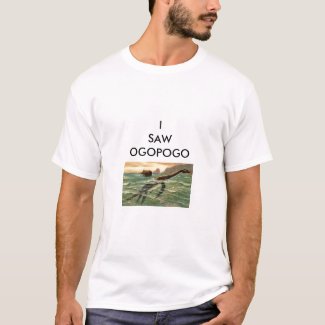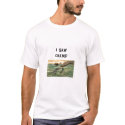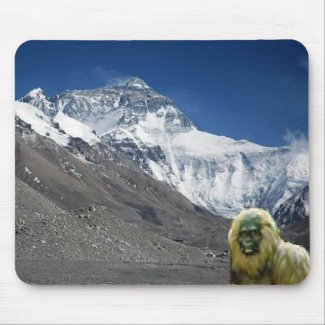Hillforts - A fan site
.
Sometimes you have to press enter/ return key, on your keyboard on the address bar to go to a page after you pressed on it's link.
Abominable Snowman,
A History of the myth
The people of much of the Himalayas, including the Sherpas, Tibetans, Bhutanese, Nepalese and Sikkimese have many myths about the Yeti. There are many different stories and tales about the creature, and some aspects are placed even into the religious practices of some groups. Indeed in some villages of Nepal some people even in the 1990s, still had animal sacrifices to the "Snowman" before hunts.
The 3 main Yetis in legend are firstly the mih-teh, a giant ape like creature with a sloping forehead. The word Mih-teh is translated as a man-like living thing that is not a human being. The animal has short red hairs covering it's body, a robust face, large teeth and a conical head. It is seen as the most dangerous, and in legend is smaller than the dzu-teh and larger than the teh-lma. Sherpa legends claim that this creature is stocky, Carnivorous, between 5 foot and 6 foot, and is far stronger than humans.
Then the dzu-teh, or a hulking large thing, the largest of the supposed species, sometimes said to stand 7 to even 8 foot tall, but it is not as dangerous as the mih-teh, being more omnivorous than the other kind. Though bipedal, like the other 2 kinds of the species, this species though sometimes goes by the way of a quadruped. It is shaggy, and feeds on cattle with it's claws.
Then there is the third kind the Teh-Lma, a one metre high species that has a pointed head. It is said to be nocturnal, whereas the others may be too, but are not explicitly said to be so. Some claim that this creature lives on a diet of frogs, some that it is a race of Homo floresiensis style creatures, and some that it is a baboon. This creature also lives more in the lows of the Himalayas, in the forests, than in the highs which the other creatures often inhabit. Some people add the other idea, that this may be the young version of the above species.
There are countless examples of tales about the Yeti from local people, the main reason why people believe in the Yeti in that area, and in many places worldwide. On top of local folklore though, there have also been sightings from people outside the area, that were recorded and documented, many are mentioned below, so making this myth seem even more than a remarkable kind of the local folklore about mythical creatures, and wildlife that you traditionally get in every country of the world.
Serious Chinese anatomy dictionaries, one in the 18th Century and one in 19th Century mentioned and had a drawing of a hairy wildman species, and certainly for the 18th Century existing in Tibetan areas, as if the species was a form of fauna, like yaks or wild horses.
In 1832, came the first major entrance of this into western reaches. The Journal of the Asiatic society of Bengal published a account of B. H. Hodgson, who wrote that while trekking in northern Nepal, his locally based guides spotted a tall, bipedal creature covered with long dark hair, and his staff then fled in fear. Hodgson did not see the creature, but concluded it was an orangutan. B.H Hodgson a representative of the UK in Nepal claimed his servant told him that a hirstute creature had attacked his servants, and that they the locals called this creature the Rakshas, or demon.
In 1889 Major L A Waddell of the British Army, saw large footprints in the snow in North East Sikkim. His servants claimed these were those of a man style creature the Yeti, which supposedly could attack humans and take them away as food. He wrote
"Some large footprints in the snow led across our track and away up to the higher peaks. These were alleged to be the trail of the hairy wild men who are believed to live amongst the eternal snows, along with the mythical white lions whose roar is reputed to be heard during storms. The belief in these creatures is universal among Tibetans. None, however, of the many Tibetans I have interrogated on this subject could ever give me an authentic case..." He later claimed that it could have been a bear.
In 1902 some workmen, posting telegraph lines between Lhassa, in Tibet, and Kalimpong, in Bengal, have a claim written in the 1950s, that soldiers present killed a Yeti. John A. Keel's book said that an old Indian soldier who saw it: said it was 3 meters in height, hairs hirsutes from 7 to 8 cm length. Alarming face without hairs, yellow and sharp-edged teeth, red and cold eyes
In 1914 A British forestry officer in Sikkim, J R P Gent, claimed to have identified large foot prints of a surely huge and a amazing creature. Some sources say he caught a glimpse, and said it was yellow-brown haired. He said measurements of the footprints showed it with 2 feet long strides. With toe marks going backwards as of walking on knees up hills.
1921 saw the name "Abominable Snowman" begin. That year Lieutenant-Colonel Charles Howard-Bury brought a Royal Geographical Society's "Everest Reconnaissance Expedition" to Nepal, from which he authored "Mount Everest The Reconnaissance, 1921". In his work he wrote of an account, whilst crossing the 21,000 feet above sea level "Lhakpa-la" a geographic area very close to Everest. Here he found footprints in the snow, he stated that these tracks "were probably caused by a large 'loping' grey wolf, which in the soft snow formed double tracks rather like a those of a barefooted man". However Howard-Bury also stated that "our coolies at once volunteered that the tracks must be that of "The Wild Man of the Snows", to which they gave the name "metoh-kangmi". "Metoh" translates as "man bear" and "Kang-mi" translates as "snowman". It does sound a very 1920s term, like something from a Jeeves novel, aargh, a abominable Snowman. Other names could have been, the Simply ghastyly icefiend, or if seen in the 1980s, the Bad Mountain Animal man.
Confusion exists between Howard-Bury's use of the term "metoh-kangmi", words supposedly used by Boatia Sherpa's which he recited in his book. A account provided in H.W. Tilman's book "Mount Everest, 1938" where Tilman had used the words "metch" (it has been suggested that "metch" does not exist in Tibetan and "kangmi" when relating the details of and the eventual creation of the term "Abominable Snowman". Further weight is added to the notion that "metch" is a misnomer, is provided by Prof. David Snellgrove from London School of Oriental Studies and a recognised authority on the Tibetan language (1956), dismissed the word "metch" stating that it was impossible to conjoin the consonants "t c h" in Tibetan.". Documentation does seem to suggest that there are very few examples of the term "metch-kangmi", the term seems to stem from just the one source in 1921. It has been suggested that "metch" is a misspelling of "metoh", buy anyway.
Then Mr. Henry Newman became involved a man who contributed for many years to "The Statesman" in Calcutta using the pen-name "Kim". He spoke with the porters of the "Everest Reconnaissance expedition" on return to Darjeeling, and Newman either by artistic license or a mistranslation of "Metoh" as "filthy" or "dirty", which it has been demonstrated it does not mean, created the term "Abominable". Some credence to a suggestion that Newman's artistic imagination played a role in the forming of this great name for the creature, is the statement made by H.W. Tilman in his book, that "As he (Newman) wrote long after in a letter to The Times: The whole story seemed such a joyous creation I sent it to one or two newspapers'".
"Whatever effect Mr. Newman intended, from 1921 onwards the Yeti-or whatever various native populations choose to call it- became saddled with the description "Abominable Snowman," an appellation which can only appeal to the music-hall mind than to mammologists, a fact which has seriously handicapped earnest seekers of the truth".
You have to admit it does sound like a term from a 1920s Agatha Christie novel, the moniker could not have come from any other era. Why how Abominable. They could say.
"It cannot be denied however that Mr. Newman put the Yeti "on the map". During the twenties and thirties sightings of both of prints and of the animal itself occurred right across the Himalaya from the Burmese frontier to the Karakoram, not all of them by credulous witnesses.".
In 1921 William Knight claimed to have seen a pale almost naked figure, when coming from Tibet, and was in Gangtok, in Sikkim,
What was said by him was, while he stopped to breathe and watch the sun, that was setting
"While I was musing, I heard a slight sound, and looking round, I saw some 15 or 20 paces away, a figure which I now suppose must have been one of the hairy men that the Everest Expedition talk about and the Tibetans, according to them, call the Abominable Snowman." November 2, 1921, The Times. It was supposedly almost 6 feet tall, He also said "almost stark naked in that bitter cold-it was the month of November. He was a kind of pale yellow all over, about the colour of a Chinaman, a shock of matted hair on his head, little hair on his face, highly splayed feet, and large, formidable hands. His muscular development in the arms, thighs, legs and chest was terrific. He had in his hand what seemed to be some form of primitive bow". Some claim this was probably a Hindu Ascetic, or a Buddhist. or a hermit, not a yeti.
1923 Major Alan Cameron claims to have seen a pack of dark creatures on a cliff face moving along the snowline, they took pictures of the footprints, as they felt they were not that normal a looking
In 1925, N.A. Tombazi, a photographer and member of the Royal Geographical Society, saw a creature at about 15,000 ft near Zemu Glacier. Tombazi later wrote that he observed the creature from about 200 or 300 yards, for about one minute. "Unquestionably, the figure in outline was exactly like a human being, walking upright and stopping occasionally to pull at some dwarf rhododendron bushes. It showed up dark against the snow, and as far as I could make out, wore no clothes." About two hours later, Tombazi and his companions descended the mountain, and saw what they took to be the creature's prints, described as "similar in shape to those of a man, but only six to seven inches long by four inches wide.... The prints were undoubtedly those of a biped." Tombazi said many locals claimed the creature was called the Kanchenjunga demon.
1931 Bentley Beauman is said to have seen a yéti on a glacier not far from the sources of Ganges, in the west of the Himalayas.
1934 Erns Schäfer, shot many bears in the Himalayan area, claiming these were what the Yeti was.
1937 On his way from Tibet, Frank Smythe, told of many reports of hairy wildmen from Tibetans and Sherpas, he said he had seen their footprints 14000 feet up
1937 Jean Marques-Riviere, wrote in his book, L'Inde Secrete et sa Magie or INDIA SECRETES AND SA MAGIC, he claimed this occurred that a person had seen this, "We went forward cautiously; the noise grew louder. Suddenly, one of us made a sign to stop and look. In front of us, in a natural circle of high rocks, among the huge hunks of broken stone, an extraordinary spectacle met our eye; some ten giant ape-men, 3 to 4 metres high, were gathered in a ring. One of them was beating a primitive tom-tom made of a hollow tree-trunk. The man's strength must have been terrific to judge by the noise he was making. The others swayed silently in time with the tom-tom. It was some religious ceremony, no doubt, for their solemn manner and attitude showed that they were performing a magic rite. Their bodies were covered with hair and their faces were halfway between a gorilla's and a man's. But there was nothing of the animal about their attitude, and the one that was beating the tom-tom stood upright like a human being. They were quite naked, in spite of the bitter cold in this desolate region and a strange sadness could be seen on their frightful faces." Most believers in the Yeti say this nonsense.
1937: H.W.Tilman discovers prints on the glacier of Biafo in Baltistan in the solid mass of Karakoram (Pakistan).
1938 Captain d'Auvergne the curator of a Victoria memorial in Calcutta claims he was injured then nursed to health by a 9 foot tall Yeti, looking like a pre-historic human. Which carried him several miles to a cave. It let him go home after he was better.
1942 Slavomir Rawicz in his 1952 best selling book, about a supposedly true escape from a Siberian Gulag claims that while crossing the Himalayas He saw 2 8 foot tall creatures when around Bhutan and Sikkim. Watching them for 2 hours from 200 yards.
1944 The Wood/Kirkland/Maggs expedition claims it sees a Abominable Snowman, but some say this was a great account of a Langur Monkey.
1948 A uranium prospector from Norway called Jan Frostis said he was attacked by 2 yetis when in Zemu Gap in Sikkim. His shoulder was very badly damaged and he needed medical help.
1949 the Sherpa Tenzig, the man who was either the first or second man to climb Everest claimed to have seen a Yeti in the snow near a monastery in Thyangboche / Thangboche, playing in the snow. He said it was half man half beast. He says it was 5 foot 6 with a pointed and tall head, with reddish brown hair, and hairless face. He was sincere about it, and said it was not a bear or a monkey.
Western interest in the Yeti peaked dramatically in the 1950s. While attempting to scale Mount Everest in 1951, Eric Shipton took photographs of a number of large prints in the snow, at about 6,000 m (19,685 ft) above sea level. These photos have been subject to intense study and debate. Some argue they are the best evidence of Yeti's reality, but others contend the prints are from a mundane creature and have been distorted and enlarged by the melting snow.
1952: A Swiss group, finds many traces of what some wondered could be the Yeti, on the glacier of Khumbu, but they have a general view the traces were made by a bear.
In 1953, Sir Edmund Hillary and Tenzing Norgay reported seeing large footprints while scaling Mount Everest. Hillary would later discount Yeti reports as unreliable.
In 1954 The Daily Mail "Snowman Expedition" of 1954, on March 19 printed an article, where the expedition teams obtained and submitted specimens of hairs from the scalp in Pangboche monastery. The research on the hair was conducted by Professor Frederic Wood Jones, F.R.S, D.Sc., (who died on September 29 1954) and an expert in human and comparative anatomy.
The research consisted of taking micro-photographs of the hairs and comparing them with hairs from known animals such as the bear and orangutan.
He (Professor Woods-Jones) was of the opinion that the evidence of the hairs and the photographs, from the Pangboche monastery "scalp", proved it was not a scalp of any type. The reason for this is that although some animals have a ridge of hair beginning at the top of the head and extending between the shoulders to the back, he did not believe that any animals have a ridge such as shown in the photographs of the Pangboche relic running from the base of the forehead across the top of the head and ending at the back of the neck"
The hairs were black or dark brown in colour in dull light, and a "foxy-red" in sunlight. None of these had been dyed and they were probably exceedingly old.
The hairs were bleached, cut into sections and compared microscopically with those of known animals. Wood-Jones was unable to suggest from what animal the Pangboche hairs were taken. He was, however convinced they are not the hairs of an anthropoid ape, nor of a bear. He suggests they may come from the hair of a coarse-haired hoofed animal, but not from its head; they may be from its shoulder.
During the Daily Mail Snowman Expedition of 1954, the largest search of its kind, the mountaineering leader John Angelo Jackson, made the first trek from Everest to Kangchenjunga and in the process photographed symbolic paintings of the Yeti at Thyangboche Gompa.Jackson tracked and also photographed many footprints in the snow, many of which were identifiable. However, there were many large footprints which could not be identified. The flattened footprint-like indentations were attributed to erosion and subsequent widening of the original footprint by wind and particle action. The head had been a scalp that was said to be of a wildman, and was worshipped in the monastery. It's conical shape in keeping with Sherpa Tenzig's view of what it is. Though of course sightings of aliens, often are said to look like the ones that are currently most popular at that time on TV. So him seeing a species that looked like what the local myths say the Yeti looks like was not 100% proof that it exists. He is the most famous person to have said to have seen a Yeti by far.
Dr. Teizo Ogawa of Tokyo University in a later investigation claimed that the he has examined the 2 hands from that monastery, and the scalp. Recent reports say he has examined the 3 and he says that all the sources come from the same animal.
1955 the Frenchman Abbet Bordet says he saw 3 trails of prints of a unknown creature
Beginning in 1957, Tom Slick, an American who had made a fortune in oil, funded a few missions to investigate Yeti reports. In 1959, feces reportedly from a Yeti were collected by Slick's expedition. Analysis found a parasite but could not classify it. Bernard Heuvelmans wrote that "Since each animal has its own parasites, this indicated that the host animal is equally an unknown animal."
1958 A US scientist Dr Norman Dyrenfurth who worked in Kathmandu, went into caves where he claims a "low-grade" human of near human lived. He took plaster casts of the feet, and some hair samples. Plus food remains.
Apparently in 1959 it is claimed a man called Peter Byrne who was part of Slick's expedition, as the Monastery at first refused to allow the scalp to be tested took away parts swapping them for some human bone.
In 1959, actor Jimmy Stewart, while visiting India, reportedly smuggled the remains of a supposed Yeti, the so-called Pangboche Hand, by hiding them in his luggage when he flew from India to London.
The Pangboche hand parts from Byrne a hand from a monastery in Nepal, supposedly from a yeti, have been investigated at least 2 times. The first London University primatologist W. C. Osman Hill, claimed it was possibly Neanderthal.
Another expert, a American anthropologist by the name of George Agogino claimed it was possibly near human, but not human, as of what he felt about the tissue remains.
In 1960, Sir Edmund Hillary mounted an expedition to collect and evaluate evidence for the Yeti and sent a Yeti scalp from the Khumjung monastery to the West for testing. The results indicated that the scalp had been manufactured from the skin of the serow, a goat-like Himalayan antelope. But that they were 200 years old When returned. But some disagreed with this analysis. Shackley said they "pointed out that hairs from the scalp look distinctly monkey-like, and that it contains parasitic mites of a species different from that recovered from the serow." When returned the scalp carried on being worshipped. Whether the apparent story of the human bone, placed in part of the remains, damaged Hilary's team's report is not known. This could have skewed and harmed their investigation.
This same Hilary led Himalayan Scientific and Mountaineering expedition of 1960-61 claims to have found some tracks of a unidentified animal.
In other monasteries there are also said, to scalps, and pelts and some even claim there is a 400 year old mummified corpse of a Yeti.
This disfigures the timeline a bit, but I will say in the 1950s the Kathmandu Chronicle reported a head of yeti kept in a monastery in Chilunka, 50 miles North of Kathmandu, supposedly that of one killed by Nepali soldiers, who had been being victims of the creature. Chemed
Rigdzin Dorje a Tibetan Lama, claims a monastery keeps a mummified remain of a yeti. A High lama of Thyangboche monastery and a village elder both claimed to have seen many yeti furs across their lifetime. Plus in 1959, a Supposed mummified Yeti corpse, supposedly found by a Nepali trader in Tibet was supposedly lost while shipped to and around from Beijing University., Supposedly Tibetan Lama Chemed Rigdzin Dorje Lope, claims that he examined 2 mummified yetis, in Tibet, but claims they were kept in monasteries that the Chinese army supposedly destroyed.
In 1970, British mountaineer Don Whillans says he saw a creature while scaling Annapurna. While scouting for a campsite, Whillans heard some odd cries. His Sherpa guide told him the sound was a Yeti's call. That night, reported Whillans, he saw a dark shape moving near his camp. The next day, Whillans observed a few human like footprints in the snow, and that evening, he asserted that with binoculars, he watched a bipedal, ape-like creature for about 20 minutes as it apparently searched for food not far from his camp. It is reported in some articles that he saw in Moonlight a "ape-like creature" bounding on it's fours over a crest of a ridge. Some say this sounds very much like a Langur Monkey. A example say some people,. of people wanting to see the Yeti but just misleading themselves.
1971 Yoshiteru Takahashi, who was a member of a Japanese expedition claim a member saw on Dhaulagiri, a gorilla 15 metres away from him for 40 seconds. Claiming it was 150 CM tall. He says his camera failed, so he could not take a picture.
In 1972, footprints found by Edward Cronin and Dr Howard Emery around Everest base Camp. They followed these to a steep incline. They said a person could not have climbed the climb. A mould of the footprint was took for Jeffrey McNeely.
1978 Lord Hunt, also known as John Hunt, who led the successful 1953 expedition to climb Mount Everest, took a photograph of what some thought could be Yeti tracks.
1978 Miller and Cacciolfi claimed they received what could be Yeti chest hairs off a elderly lady of Khumjung village, Nepal, just to the South West of Mount Everest. Her son had been taking some potatoes on a trail that year, & was supposedly attacked by one Yeti. It was male and almost seven feet high, and coloured by dark & reddish hair. The man used his hoe to attack the Yeti striking the chest so it fled to a higher mountain area. His wounds were so serious he died. They obtained these hairs long, black, and coarse as of the February and March, 1986, the New World Explorers Society (NWES), that looked at this area.
In 1979 mountaineers John Edwards & John Allen were searching for a site of bivouac or base, at 5600 metres above sea level. Edwards saw a "rock overhang forming a natural shelter", They were surprised to find prints of a near human foot in the snow. They also heard a piercing cry, alarming, inhuman, lasting 5 to 10 seconds. They thought it may be the Yeti. As said in the People, January 21, 1980.
A team returned the next day taking photos of prints, and as they were different sizes, they decided it was a family. They decided there may be animals up there like the Yeti.
1979, Guo Shenbao, on the Nepal Tibet border, claims to have been in a hut and to have felt a furry yeti's hand on his face.
In 1986, Italian mountaineer Reinhold Messner claimed to have come face to face with a Yeti. In Eastern Tibet. He has since written a book, My Quest for the Yeti, and also claims to have actually killed one. According to Messner, the Yeti is actually the endangered Himalayan Brown Bear, Ursus arctos isabellinus, that can walk upright or on all fours.
1994. Yoshiteru Takahashi talks of a bolt hole 4600 metres up in which a animal would have been It stretched 5 metres into the mountain. He was again around the area of Dhaulagiri.
1998 US climber, Craig Calonica said he had seen two yetis going down the Chinese side of Everest
In 2001 Britain's Channel 4 with a British team, in a forest in Eastern Bhutan found some hair. They put the hair, which looked unusual through a DNA tests and it was not found what it was.
In 2003, Japanese mountaineer Makoto Nebuka published the results of his 12-year linguistic study and postulated that the word "Yeti" is actually a corruption of the word "meti" - a regional dialect term for "bear". The ethnic Tibetans fear and worship the bear (as in many traditional cultures) as a supernatural being. Nebuka's claims were subject to almost immediate criticism, however, and Nebuka was accused of linguistic carelessness. Dr Raj Kumar Pandey, for example, who has also researched both Yetis and mountain languages, said "it is not enough to blame tales of the mysterious beast of the Himalayas on words that rhyme but mean different things."
Many cryptozoologists, after examining eye-witness reports and statistical evidence, have concluded that Yeti reports are misidentification of more mundane seeming creatures. Many quite well-financed expeditions have turned up little positive evidence of its existence, although one expedition to Bhutan did retrieve a hair sample that, after DNA analysis, could not be matched to any known animal.
Some say the creatures could be present-day specimens of a extinct giant ape Gigantopithecus, as the only evidence (other than teeth) recovered from Gigantopithecus (its jawbone) indicates a skull rested upon a vertical spinal column (as in hominines and other bipedal apes such as Oreopithecus). However, while the Yeti is usually described as bipedal, most scientists feel that Gigantopithicus was probably quadrupedal, and so massive that unless it evolved specifically as a bipedal ape (like Oreopithecus and the hominids) upright walking would have been even more difficult for the now seeminlgy extinct primate, It's closest prooven to exist relative is the orangutan,
In December 2007, US TV presenter Joshua Gates and his crew from the programme Destination Truth, reported finding footprints in the Everest area of Nepal resembling descriptions of Yeti. Each prints measured 33 cm or 13 inches, long with five toes measuring 25 cm ( 9.8 inches ) across. Casts have been made of these prints for research. Jeffrey Meldrum of Idaho State University, believed them to be just too accurate to be fake or be man made. Meldrum stated they were similar to a pair of Bigfoot footprints found elsewhere.
In 2008 on July the 25th, the BBC reported hairs collected in a remote Garo Hills area of North East India by Dipu Marak were analyzed at Oxford Brookes by Anna Nekaris and Jon Wells. The tests were inconclusive, and ape expert Ian Redmond told the BBC there was similarity between cuticle patterns of the hairs and specimens collected by Edmund Hilary in Himalayan expeditions in 50s donated to the Oxford University Museum of Natural History, and announced planned DNA analysis. Analysis revealed the hair came from a Himalayan Goral.
On October 20th, 2008 seven Japanese adventurers photoed prints possibly made by a Yeti. The leader, Yoshiteru Takahashi claims to he saw a Yeti on a 2003 expedition, and wants to record a Yeti in action on camera.
In 2009 Joshua Gates crew, on another expedition to the Himalayas, found hair that did not appear to match any known animal, though it was confirmed as being of a large primate. They also saw a animal limb that had been torn straight off of a animal, and suspected this was done by a Yeti in action.
******
So the best theories on the Yeti Are.
Of course the most likely that it is just a untrue myth, from various reasons. not all myths are untrue, but this seems a most likely answer, sadly, as so for the Loch Ness Monster, though most experts put the Yeti as more likely to be true than Nessie.
Next that it was just on most cases, the locals referring to a animal, that was mistaken by outside, and local observers in terms of name. Like that case in Central Africa, where some experts believed that locals Africans were referring to a lost dinosaur, and people tried to figure this out for years, then experts realised this was just the rhino, in another language. So for the Yeti, most say it was likely a normal bear, or a different kind of bear to the area, that was not the normal kind. Possibly in some cases, local myths, and foreign myths made blurry sightings more likely to be interpreted so.
Then, into the world of cryptozoology, where science meets science fiction, a fun subject even for those of us who take the stories with a big pinch of salt. (Some of the stories by it's practioners can be fun to hear, and some talk about stories about lions and such so sometimes more exicting, and bringing up a fun primeval sense of fear I think for many). The best theory is that there is a surviving Gigantopithecus in the mountains, It was a real, 9 foot, tall maybe not as tall, but some say, giant orangutan who lived in South East Asia till 100,000 years ago. It's cool to think the stories are about a real creature who lives up there, of course unlikely but cool. I mean the best reason to say no, is come on, they would have got proper evidence by now. The best excuse the other way around it that come on, people never take a good photo of something they see just for a few seconds, it's not enough time to get a good photo. Though on balance the lack of great evidence is pretty compelling. Even if it is so that many species have been found in modern times, certain animals were only confirmed as certainly existing in the 20th Century. Though for them, it is just typology, like the gorilla, well it was known they existed for a long time, but comparitvely late for the mountain gorilla to be identified and as a species, and the same so for other such things, like for certain type of deer or turtle. Then again there is the giant squid that was only identified for the first time, in the past couple of decades or so in a photo, when previous specimens, were normally just washed ashore. The difference there is the sea, and it's depths are harder to photo, the mountain highs have been transversed so often there should have been a photo by now. So really even this theory is likely less likely. Any theory that this is a folk memory myth from 100,000 years ago, is added to as Home Erectus Denisovan genes have been found in tiny percentages among modern Tibetans, So therefore likely how Europeans, absorbed a small amount of Neanderthal DNA into the world's Homo Sapien Sapien population, then Tibetans did for Denisovans, So therefore maybe Denisovan myths and memories and could have lasted in folklore of Tibetan and Nepali legend. Seems unlikely though, I mean it is the same as how the Homo Florensis the 3 foot tall people of Flores Island, from tens of thousands of years ago, have a spectacular myth surviving today of little people that lived years ago in Flores island. How there are local myths about such a people. It is shocking to think it could be the case, but unlikely really myths can survive that long, it is likely just coincidence.
Though I must say some 20th C depictions of the Yeti do look like some Black and white snub nosed monkeys, which are in Yunnan, the white and black, on them, but they are tiny.
I would really like a computer game, 19080s style on finding the Yeti, covering Nepal, and Bhutan. To Yunnan to Tibet, word style and play style. Staying in mountain cabins hotels and such. It could be Amstrad CPC 464 style or perhaps Nintendo style.
So all in all, it seems Yeti likely do not exist, but for sure it is a great story, that must be remembered.
Last of all, the theory the Yeti is real, and it is being covered up, well this is super unlikely as somebody would have revealed it by now. Cover ups are never able to last that long, especially for things people half know about.
Some wonder could there be similar species somewhere else on Earth, well it is even more unlikely there, even in Russia's vast Siberian wilderness. but then again who knows, but it is a big world, yes we know a lot about it, but maybe there is a tiny chance there is something we have not found, but it is unlikely. It is all a fab thought experiment though.
Subjects






